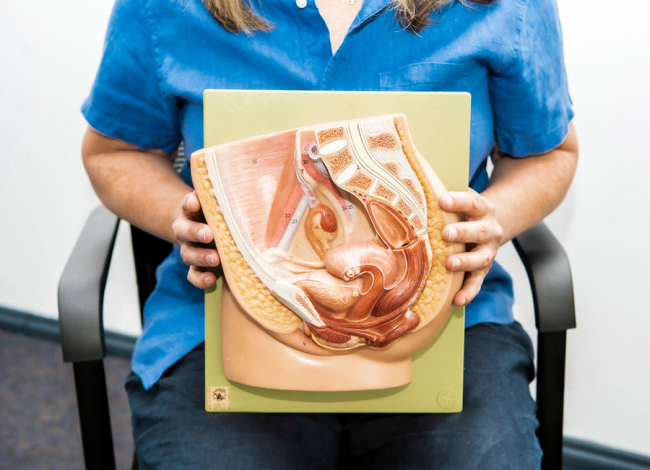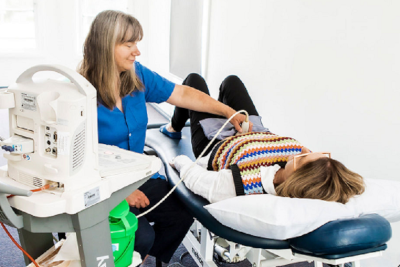

Prolapse
What is prolapse?
Vaginal prolapse or pelvic organ prolapse is when one or more of the pelvic organs, which includes the bladder, uterus or bowel descend downwards, sitting lower within the vagina or bulging outside of the vaginal opening.
Common symptoms may include:
- A feeling of something coming down, for example like a tampon sitting low.
- Noticing a lump bulging out of the vaginal opening.
- A heaviness or dragging sensation.
- A difficulty in emptying your bowels or bladder.
- A slow urine flow.
- Low back pain.
- Pain with penetrative sex.
- Symptoms are often worse by the end of the day or with physical activity and are eased with lying down.

What treatments can help prolapse?
Pelvic floor muscle training.
Our pelvic floor physiotherapists can design an individualised program that is appropriate for your pelvic floor.
Lifestyle modifications.
Our pelvic floor physiotherapists will do a thorough assessment to establish if there are any issues that are worsening the symptoms of prolapse such as straining to empty your bladder or bowels, a chronic cough, heavy lifting, exercise type and technique. They will guide you on the most appropriate modifications.
Pessaries.
Pessaries are silicone devices that are inserted into the vagina to give internal support to your pelvic organs. There are a range of types and sizes of pessaries. An appropriate, well fitted pessary can significantly improve the symptoms of prolapse.
Inner Strength offers a “Pessary Clinic” service run by a trained physiotherapist. Your treating pelvic floor physiotherapist can guide you on whether this would be an appropriate option for you.

